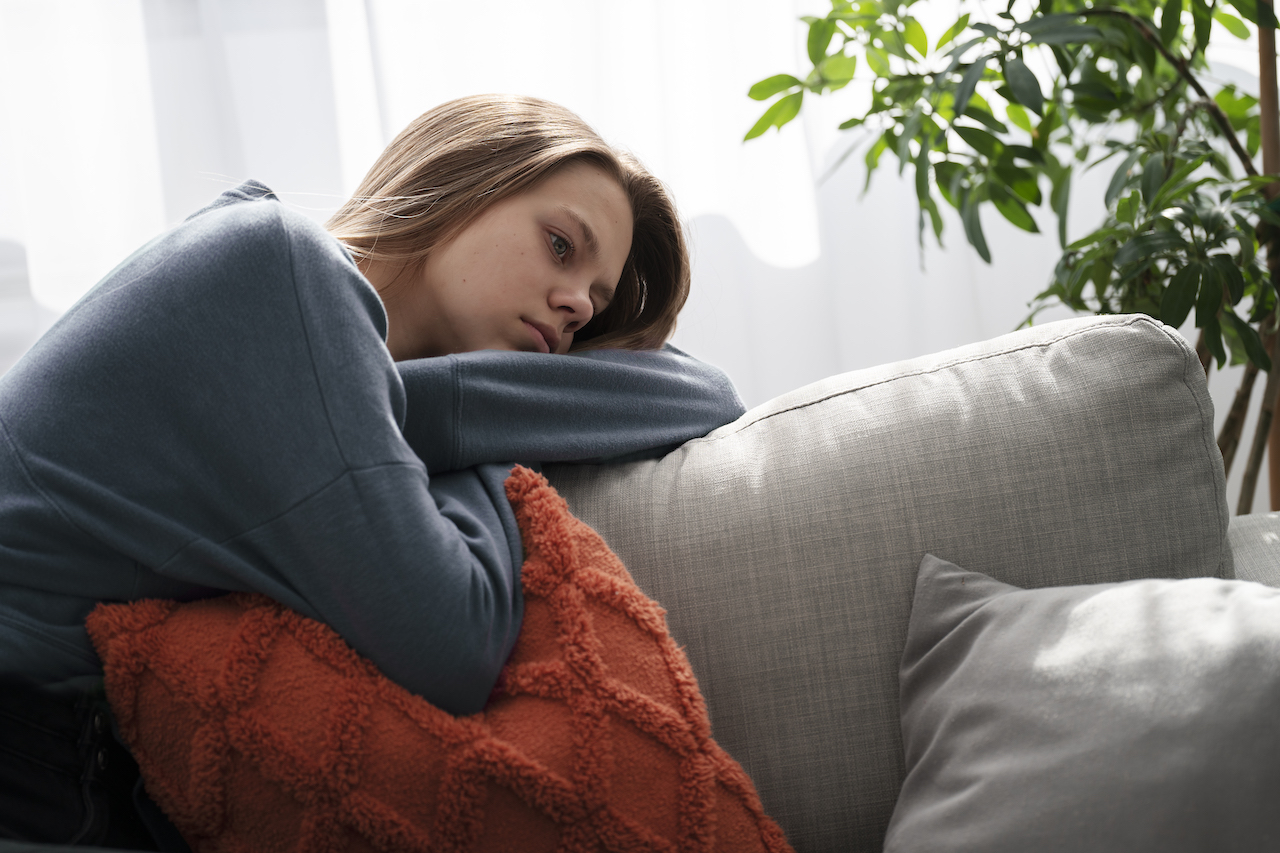Seasonal depression, often referred to as Seasonal Affective Disorder (SAD), manifests during the darker, colder months when sunlight is scarce. The changing seasons bring a shift in weather and, for some, a significant negative impact on mental well-being. It is important to explore the nuances of seasonal depression to ensure proper support, planning, and exploration of treatment modalities to support the individual and provide symptom relief.
What Are the Mechanisms Behind Winter Depression?
Seasonal changes, particularly the reduction in sunlight exposure during winter, disrupt the body’s internal clock (circadian rhythm), leading to mood disturbances. The lack of sunlight can affect the production of serotonin, a neurotransmitter that contributes to feelings of well-being and happiness. Serotonin depends on vitamin D availability, which is used in the active synthesis of neurotransmitters. Vitamin D is primarily derived from sunlight. Therefore, a decrease in light lowers the amount of vitamin D and, subsequently, serotonin.
SAD is more common in people who live far north or south of the equator, where there are fewer daylight hours during the winter months. Additionally, melatonin, the hormone that promotes sleepiness, increases with increased darkness, impacting sleep-wake cycles, inducing fatigue, and reducing energy.
It is important to note that SAD is different from the winter blues and average seasonal stress. For example, winter also brings the holiday season, where we often deal with not only the cold weather but also financial stress, seeing relatives and dealing with complicated family dynamics more frequently, and in some cases, increased alcohol consumption during celebrations- which can all contribute to depressive feelings. Individuals may feel guilty for having low energy and feeling exhausted during winter.
Exploring the symptoms of expected feelings when confronting emotional challenges versus an actual experience of SAD is essential in differentiating when an individual may need to seek professional support and obtain a proper diagnosis.
Not Just the Winter Blues, Symptoms of Seasonal Depression:
• Persistent Low Mood: Individuals with SAD may experience persistent feelings of sadness or hopelessness.
• Low Energy: A notable decrease in energy levels and increased fatigue, even with adequate rest.
• Changes in Sleep Patterns: Disturbances in sleep, such as chronic oversleeping.
• Difficulty Concentrating: Reduced ability to concentrate and make decisions.
• Loss of Interest: Diminished or absent interest or pleasure in activities that were once enjoyable.
How Long Does Seasonal Depression Last? Should I Seek Help?
While seasonal depression typically follows a pattern of onset in late fall or early winter and remission in spring, the duration can vary. An official diagnosis is generally given when SAD symptoms occur in 2 consecutive years. It is important to note that seasonal depression can have a significant impact on daily functioning, and seeking professional help is crucial when:
• Symptoms Intensify: If symptoms become more severe or significantly interfere with daily life.
• Persistent Symptoms: When symptoms persist for an extended period and do not naturally improve with the changing seasons and warmer, sunnier months.
• Impact on Relationships and Work: If seasonal depression affects relationships, work performance, or overall quality of life.
Coping Strategies and Support
Being intentional about getting outside in any way possible can significantly reduce the symptoms of SAD. Removing or opening window coverings and saving indoor tasks for after-dark are good starting points. In addition, those with SAD may benefit from:
• Light Therapy: Blue light therapy that mimics natural morning sunlight to increase serotonin production.
• Outdoor Activities: Prioritizing outdoor activities to enhance exposure to natural light, particularly in the morning and without sunglasses, and on the skin without sunscreen (which blocks the body’s ability to absorb light), is crucial.
• Social Connections: Facilitate social interactions as tolerated to combat feelings of isolation and loneliness.
• Mindfulness and Relaxation Techniques: Introduce mindfulness practices to manage stress and anxiety.
Key Takeaways
Seasonal depression is a nuanced mental health condition that necessitates a compassionate and holistic approach. When implemented regularly, many interventions that help relieve symptoms are low effort and high impact. Recognizing symptoms and differentiating SAD from other forms of depression is crucial for addressing SAD. Seek professional help if symptoms intensify, persist, or impact daily life.
If you or someone you know is experiencing symptoms of seasonal depression and could use some help, contact us today. Our team of compassionate professionals is here to support and guide you toward restorative mental wellness.
References:
Rosenthal NE. Issues for DSM-V: seasonal affective disorder and seasonality. Am J Psychiatry. 2009 Aug;166(8):852-3. [PubMed]
Melrose S. (2015). Seasonal Affective Disorder: An Overview of Assessment and Treatment Approaches. Depression research and treatment, 2015, 178564. https://doi.org/10.1155/2015/178564

